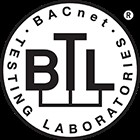am 22.06.2023 - 09:33 Uhr
With the help of new technologies, real estate processes are also experiencing a new level of quality. For example, building systems are no longer maintained on a fixed schedule. Instead, they can be condition-based maintained or repaired through the analysis of a multitude of available data - in other words, in a timely manner before they fail. This is made possible by predictive maintenance tools such as Big Data, analytics, or Artificial Intelligence (AI). The foundation for digital transformation in architecture, engineering, and construction is Building Information Modeling (BIM).
Fig. 1: Interaction of Building Automation and Facility Management with CAFM for Future-Proof Technical Facility Management using BACnet (Fig. © pit Group)
As a digital twin, BACtwin essentially represents the reality of building automation through the following three elements:
Data serves as the digital backbone of the digital building twin. In addition to basic data such as building/floor information and equipment/component information, it also requires commercial data (costs related to the property) from the world of ERP systems (Enterprise Resource Planning). In addition to inventory data and commercial data, condition data of the building and its equipment are particularly necessary for a digital twin. With the help of building automation and IoT, equipment conditions (meter readings, equipment malfunctions, and similar events) can be provided in real-time. However, it is only through the interconnected interplay of various data and with the right tools, such as data analysis tools, that (new) insights into a building and its installed equipment and components can be gained. Weak points can be identified in a timely manner, and optimization potentials can be made transparent.
But how can all data be easily captured and contextualized over the lifecycle of the property? How does the automated interaction between master data and order data from a CAFM system (Computer-Aided Facility Management) with the current equipment condition data provided by building automation occur?
The Association for Digitalization in Real Estate Operations, CAFM Ring, Wuppertal, has introduced a standard called "CAFM Connect." Systems and components are classified consistently with DIN 276 "Costs in Construction" (2018) and described with the necessary attributes in a unified format (IFCXML) based on the application case (process reference). In other words, CAFM Connect is an Open-BIM interface for the exchange of real estate data. Corresponding BIM profiles describe the required attributes for a specific object such as a system, component, or aggregate from ventilation or refrigeration trades, necessary for a particular process such as equipment maintenance. The object structure in CAFM Connect is hierarchically structured and follows the cost groups of DIN 276. At the top hierarchy levels, the trades are described analogously to DIN 276.
At this level, only the characteristics universally applicable to a trade are described, such as:
Manufacturer Type Year of construction Commissioning date
These characteristics are inherited to the lower hierarchy level for aggregates and components.
Also analogous to DIN 276, the classification of aggregates and components assigned to a trade is carried out at the next level. These may include:
At this level, component-specific characteristics are described, such as:
Motor rated power Speed control Air flow rate Device version Article number and much more
For a uniform and consistent description of components and aggregates, partially predefined values are provided in the form of a selection list. For example, the device version of the fan (axial fan, radial fan).
The BIM profiles can be represented as an IFC dataset (Industry Foundation Classes) in IT systems such as building management systems (BMS) or CAFM. This enables seamless communication between different system environments.
In the interaction between building automation (GA) or building management systems (BMS) and CAFM, real-time process data is derived from status data for smart processes such as fault management, maintenance, energy management, and more. For example, consumption values are available for operational cost accounting.
With the help of standardized classification systems, data can be structured, described, captured, and maintained from the initial planning phase in a BIM project. If these classification systems are implemented in the respective IT systems such as building automation (GA) or building management systems (BMS) and CAFM, both worlds can communicate with each other seamlessly.
Fig. 2: The Smart Solution - Interaction between BMS (ICONAG) and CAFM (pitFM) (Fig. © pit Group)
Example: Energy Management
Determining building-specific energy performance indicators is, among other things, the basis for benchmarking within successful energy management. The procedure for this communication-free process is as follows:

The ICONAG MBE (Management and Operating Device) software has been certified as B-AWS (BACnet Advanced Workstation) according to the latest BACnet Revision 19.
Powered by ModuleStudio 1.3.2